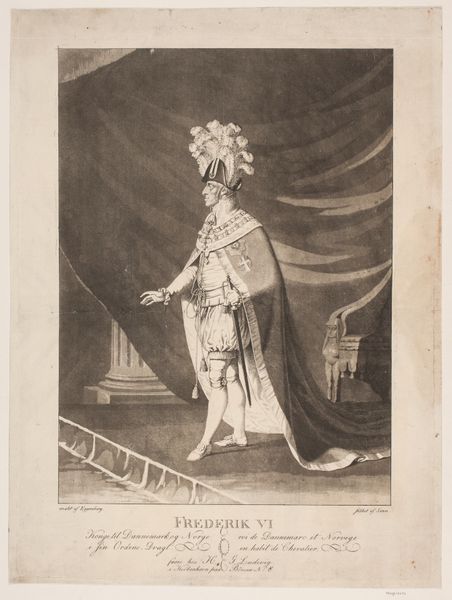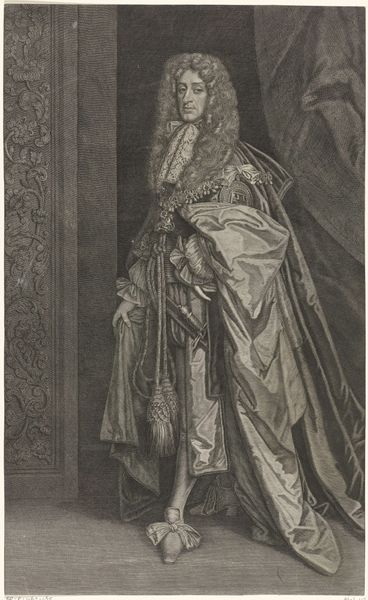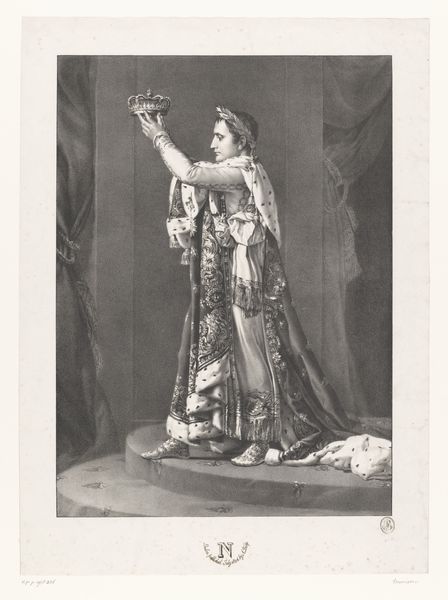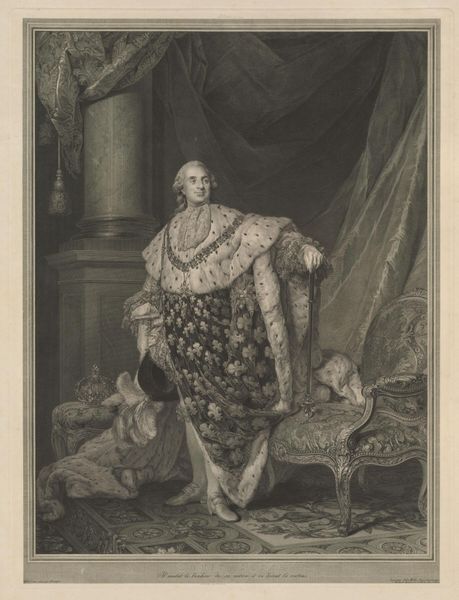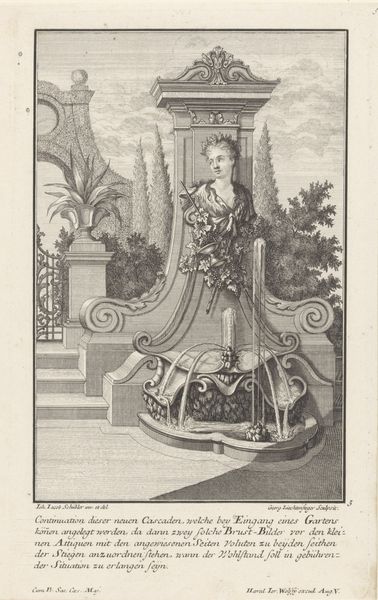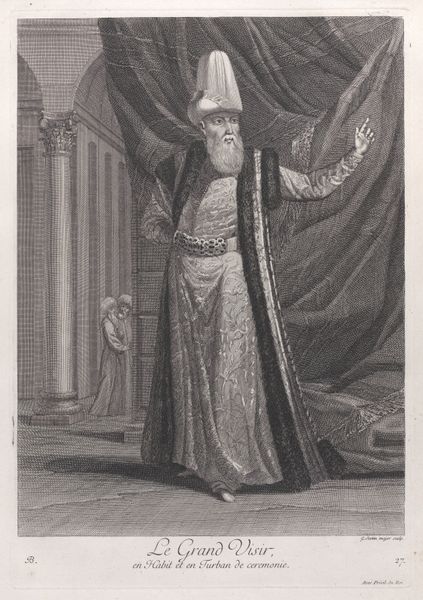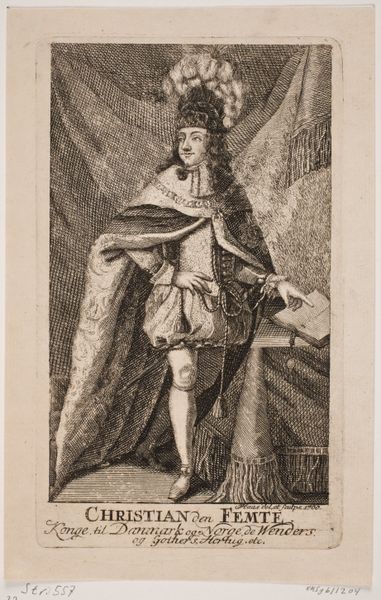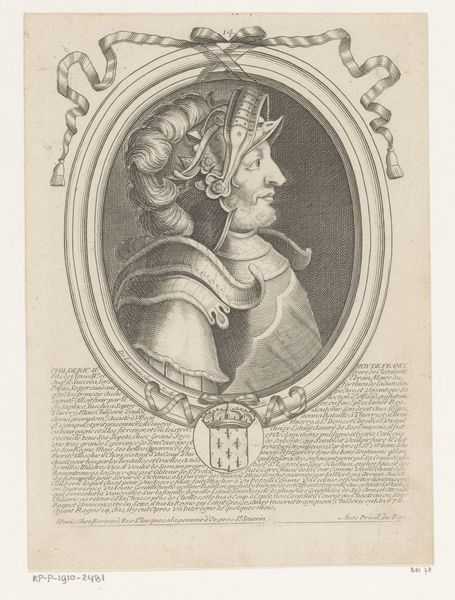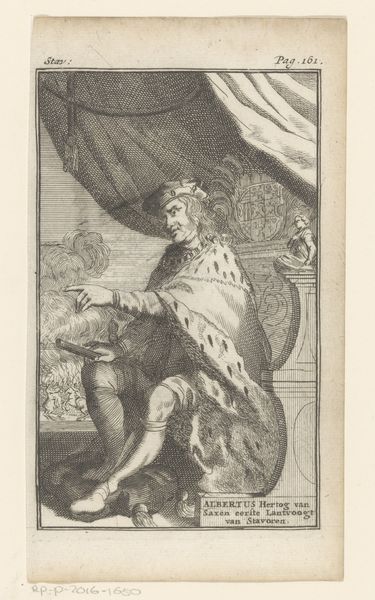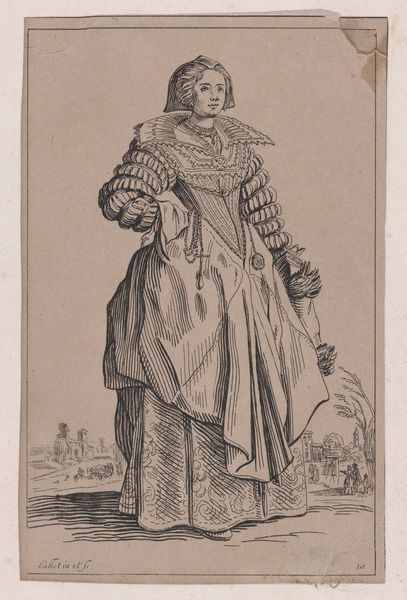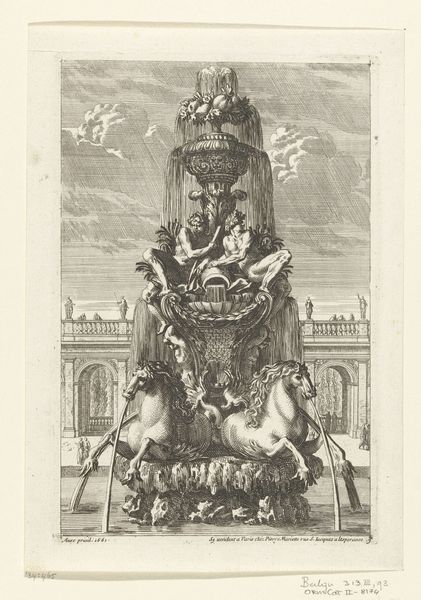
print, etching
#
portrait
# print
#
etching
#
old engraving style
#
19th century
#
history-painting
#
academic-art
Dimensions: 426 mm (height) x 304 mm (width) (bladmaal)
Editor: This is "Frederik VI i ordensdragt," made sometime between 1780 and 1860, a print created with etching by Johannes Senn. It's a formal portrait, and the old engraving style gives it a sense of gravity. How do you interpret this work from a formal perspective? Curator: Note how the composition is built around contrasting textures: the smoothness of the classical column juxtaposed with the intricate patterns in Frederik’s clothing and the feathery textures of his hat. Consider also the balance achieved between the lightness of the figure and the heaviness of the drapery behind. The eye is drawn upward, then pulled back into the center, no? Editor: Yes, the textures definitely add visual interest and that movement from top to center feels really intentional. I hadn't really considered that column and its interplay with the composition; so the use of classical elements signifies what, exactly? Curator: Observe its smooth, cylindrical form. It offers not only visual rest from the other rich ornament, but consider what it is in juxtaposition with; the heavy draped curtain implies the temporality of monarchic power, and by comparison, a claim of its permanence by associating with a classical ideal of eternal leadership. Do you see what effect that tension has upon the image overall? Editor: I think I get it, it is like a play between the long-term rule the monarchy intends for itself and the fleeting nature of…well, everything. What I'm taking away is to observe how line and form convey something that is almost the opposite of what's actually represented. Thanks! Curator: Precisely. An engagement with that deeper structural play reveals its conceptual and visual achievement.
Comments
No comments
Be the first to comment and join the conversation on the ultimate creative platform.
